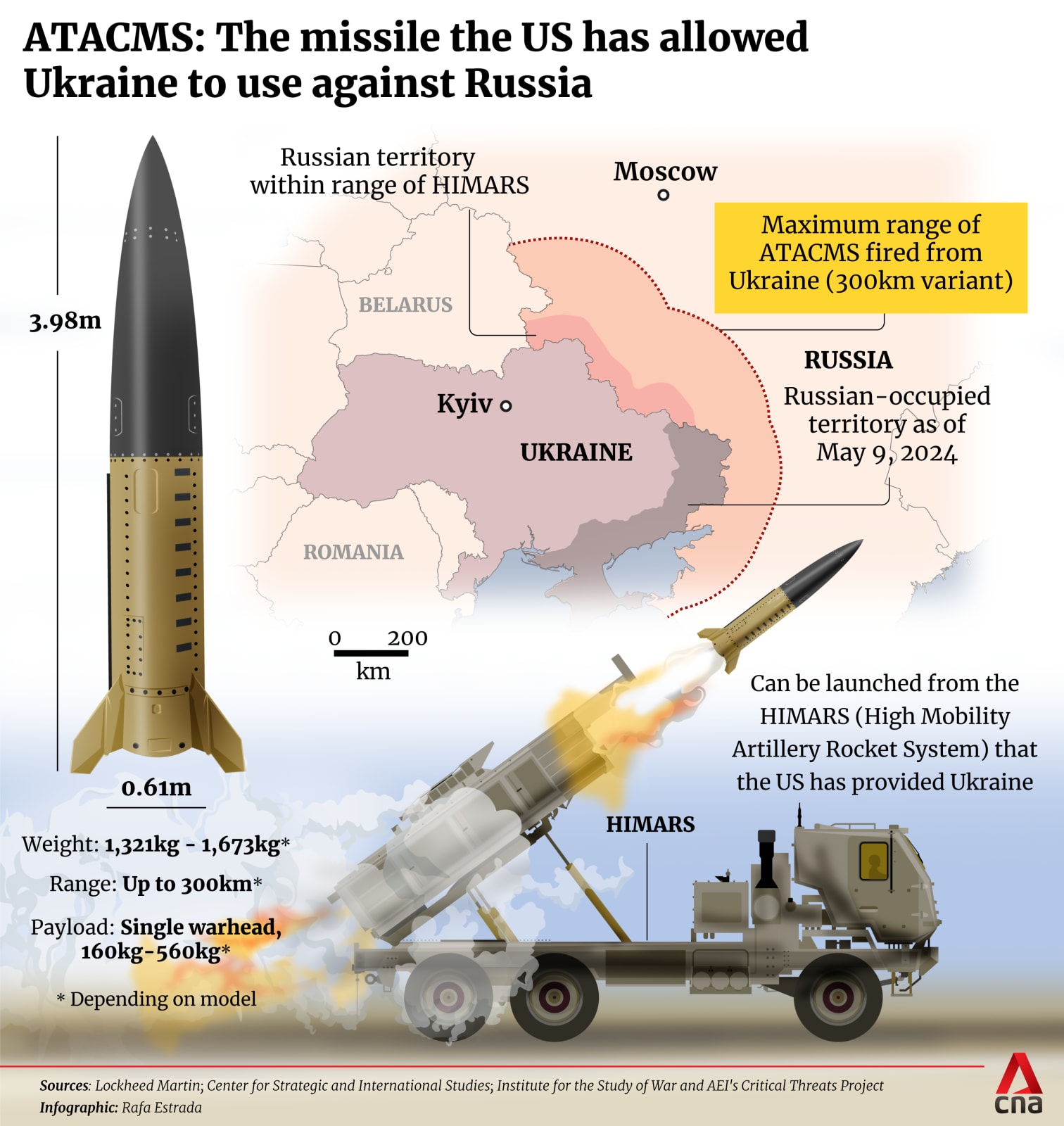Commentary: Biden makes a huge gamble by allowing Ukraine to strike inside Russia with US missiles – but it could pay off
If Joe Biden’s gamble of allowing US missiles to be used inside Russia pays off, he will have done Ukraine a huge last favour in the final days of his presidency, says international security expert Stefan Wolff.


This audio is generated by an AI tool.
BIRMINGHAM: In a surprise decision on Sunday (Nov 17), the United States reversed course on a long-standing policy decision: Ukraine now has permission to use US-supplied long-range missiles for strikes deep inside Russian territory. But after 1,000 days of war, is this too little too late?
The move comes about two months before Donald Trump will re-enter the White House. If President Joe Biden’s gamble pays off, he will have done Ukraine a last favour in the final days of his presidency.
Allowing Ukraine to attack targets well behind the frontlines will contribute to the predictable intensification of fighting following Trump’s re-election.
Moscow and Kyiv are both trying to improve their positions on the battlefield ahead of an expected push for a ceasefire that would freeze the conflict along the frontlines at the time of its imposition.
MOMENTUM OF RUSSIAN SUCCESS AND NORTH KOREAN TROOPS
Until now, Russia was more successful in doing so. It has made gains both inside Ukraine and, with the help of over 10,000 North Korean soldiers, in the Kursk region.
Ukraine has been at a clear disadvantage, outnumbered and unable to disrupt Russian supply lines, destroy airbases, and target staging areas of troops behind Russian frontlines. There were also clear indications of a very real risk that Ukrainian defence lines are crumbling – both in the Donbas area in the east and around Kharkiv in the northeast.
The momentum of Russian success in pushing back the incursion into Kursk also increases the danger of opening another front on Ukrainian territory. Russian troops and equipment deployed in Kursk could simply be used to push further into Ukraine once Ukrainian forces were driven out of Russian territory.
Not only would this have deprived Kyiv of its only bargaining chip in future negotiations with Moscow, it would also have given the Kremlin additional leverage – both over Ukraine and vis-à-vis its allies in the US and Europe.
Biden’s decision was a response to Russia’s deployment of North Korean troops, according to US officials, but was likely also influenced by one of Moscow’s largest airstrikes against Ukrainian civilian infrastructure the night before.
TEMPORARY RELIEF UNTIL INAUGURATION DAY
Biden’s decision to relax restrictions on the use of the Army Tactical Missile Systems, or ATACMS, will not, however, be a game changer.
Rockets with a range of 300km will likely improve Ukraine’s position somewhat, provided there are enough of them and they are deployed wisely. It is unknown how many ATACMS missiles, which were first delivered in April, Ukraine still has.
In all likelihood, the relief will only be temporary. The best that can be hoped for is that Ukraine will be able to stabilise the current frontlines and avoid further losses of territory until at least Jan 20, 2025.
If Trump moves quickly after his inauguration to push for a ceasefire, Biden’s gamble will have paid off.

VLADIMIR PUTIN LIKELY TO DOUBLE DOWN
With so much at stake, significant risks also come with the decision. One is, of course, Russia’s reaction – unpredictable both in terms of its nature and its timing.
A Russian lawmaker, Maria Butina, has already raised the spectre of World War III, echoing a similar threat from President Vladimir Putin in September. While it is unlikely that Putin would go directly after NATO countries now, Russia most likely has the capability to exact a high price on Ukraine, potentially even pre-emptively before Kyiv can land any blows.
Regardless of the timing, Putin is more likely to double down on pressure against Ukraine on all fronts, including in the campaign against civilian infrastructure.
Ukraine might not be able to capitalise on relaxed US rules of engagement to the extent it had hoped.
WHAT WILL DONALD TRUMP INHERIT?
Another risk is the reaction from the next Trump administration. One of the incoming president’s foreign policy advisers, Richard Grenell, was critical of the decision.
Trump himself, however, may look at it as a way of Biden putting pressure on Putin now that will give him more leverage once he takes office to “settle” the war. It could make it easier to pressure Putin to accept a deal if Russia lost the momentum it currently has on the battlefield.
What is clear is that after 1,000 days of gruelling war, allowing Ukraine to strike deep into Russian territory with US weapons now is too little and too late for a military victory.
It may, however, be just enough to avoid a humiliating defeat at a negotiation table chaired by Trump.
Stefan Wolff is Professor of International Security at the University of Birmingham and Head of the Department of Political Science and International Studies.


















